| |
|
Saturday, May 17 Tifereth Israel Synagogue—Dizengoff Night


Sunday, May 18 Community Israel Independence Celebration

Wednesday, May 28 JFS~Ellen Saks lecture on mental illness
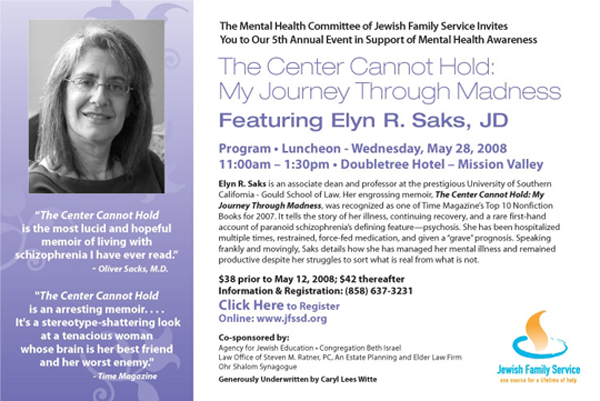

Tuesday, June 3 Guardians Golf & Tennis Tournament


Friday-Saturday, June 6-7 JFS~Judaism on the Wild Side


LETTER FROM JERUSALEM
Olmert inquiry focuses on dealings with American fundraiser Moshe Talansky
By Ira Sharkansky
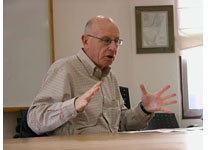 JERUSALEM—We have been roiled for more than a week in diminishing silence. There has been an intense investigation of the prime minister and those close to him, but the police and the court imposed a news blackout on all details. Some bits came out in foreign media available via the internet, but the police insisted on their posture until the end of Independence Day 60th anniversary celebrations. JERUSALEM—We have been roiled for more than a week in diminishing silence. There has been an intense investigation of the prime minister and those close to him, but the police and the court imposed a news blackout on all details. Some bits came out in foreign media available via the internet, but the police insisted on their posture until the end of Independence Day 60th anniversary celebrations.
Now we are told that an American fundraiser passed large sums, some of it in cash, to Ehud Olmert over the course of several years. The prime minister went public as soon as he could (the blackout also applied to him), and explained that the money was for campaigning expenses, and that he relied on his attorney to assure that it was all legal.
Olmert is in trouble. He has been there before, and he may emerge from this, too, with nothing more than additional scars.
He may be right in insisting that he never took a bribe, and that he never used any gifts for personal expenses, but that may be irrelevant. Israeli laws about campaign financing are much simpler and less permissive than the American equivalents. Here there are not the varieties of quasi-independent committees that raise money and spend it in favor of a candidate. Israeli politicians do not have the personal wealth of some American candidates. And the courts have not established "freedom of expression" as an umbrella for political advertizing. Moreover, it is illegal for a public figure to receive large sums of money. It is not necessary to prove a quid pro quo in terms of favors given or promised.
News is that Olmert's lawyer, who he is relying on to have managed the transfers properly, is now willing to testify against the prime minister.
The American fund raiser is a story in himself. We now know that he is Moshe Talansky, 75 years old, known as the "laundryman" by people close to Olmert. He is said to have transferred funds to Olmert beginning when he was running for mayor of Jerusalem in the 1990s. According to the New York Times, Talansky "has a long history of business disputes in the United States and Israel and an up-and-down career as a fund-raiser and investor. He has been accused at least twice of resorting to force to collect debts."
Toward the end of the news blackout, Ha'aretz slipped around the restrictions by locating Talansky's ex-wife. She lives in Jerusalem, could not be named due to what was forbidden, but expressed herself like many other women left behind for what her husband thought was someone more suitable. She was outspoken in her glee that Talansky and his friend Olmert had fallen afoul of the police. She had met Olmert, but never liked him. She viewed him as a politician who knew how to sound attractive, but was never really pleasant. She hopes that the investigation will end with his indictment.
Olmert's political opponents are dancing on what they hope will be his political grave. Left wing moralists are taking the high ground, and emphasizing that a politician who has been the subject of so many police inquiries cannot possibly lead the country. Right wing politicians are saying that he cannot remain in a position where he might make concessions to the Palestinians and Syrians.
Olmert's crisis may have broken at this time in response to reports that he may be close to some kind of agreement, perhaps partial, with the Palestinians; and has said that he would give up the Golan Heights in exchange for peace with Syria. Talansky himself has been identified with religious Jews who opposed the withdrawal of settlements from Gaza, and oppose any further territorial concessions.
George W. Bush and some other leaders of important countries are due here to help Israel celebrate its 60th anniversary. Bush is also likely to nudge, or push, whoever is the prime minister to improve the Palestinians' chances to create their state.
At this point it is not possible to conclude anything more than we are likely to hear more about all of this before Bush comes. If he comes. This might be a time for the president to reconsider his crowded schedule, and think of some way to end his presidency other than with a Palestinian state.

Sunday, June 8 Temple Solel~Tikkun Leil Shavuot
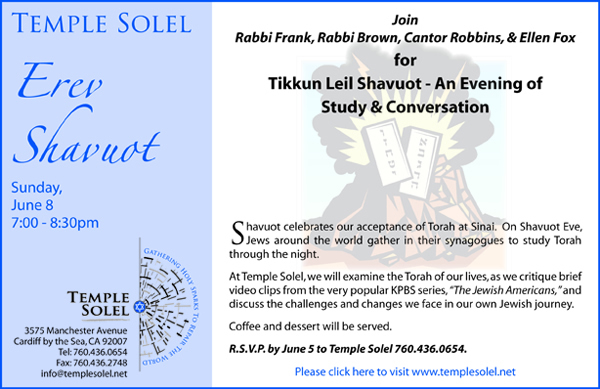

THE VIEW FROM JINSA
Naqba, or catastrophe, is propaganda; truth is Palestinians' self-imposed victimhood
By Shoshana Bryen
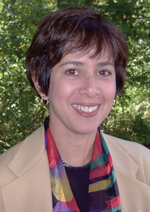 WASHINGTON, D.C.—The singular success of the Arab world in its determination not to recognize the legitimacy of Israel's sovereignty in the Middle East has nothing to do with Palestinians. It has to do with reversing the victim/aggressor relationship with Israel. WASHINGTON, D.C.—The singular success of the Arab world in its determination not to recognize the legitimacy of Israel's sovereignty in the Middle East has nothing to do with Palestinians. It has to do with reversing the victim/aggressor relationship with Israel.
For years, until 1967 to be exact, the world understood precisely that the Arab states rejected the establishment of Israel and were determined to undo it by force. The Palestinians didn't figure in there anywhere. But when Israel acquired responsibility for hundreds of thousands of people who were stateless by the choice of the Arab leadership, the problem morphed from the Arab-Israel war to the Israeli-Palestinian problem.
Falsely narrowing the perception of the threat to Israel falsely widened the perception that Israel should be "generous" with the "poor Palestinians."
Then, in a truly disgusting turn, the Palestinians (Hamas and Fatah) used their civilian population as shields in a variety of ways so that Israel would be condemned for civilian deaths, while making Israeli civilian deaths seem like turnabout - "Not a good thing," say Israel's erstwhile friends, "but what can you expect? Israelis kill Palestinian children too." If the killing is simply tit-for-tat, then Israel - as the stronger country - should make sacrifices for peace and help the Palestinians get justice, so the "killings on both sides" can stop. Even Hamas's admission that it put children on the rooftops so the Israeli Air Force wouldn't fire - a total violation of international law governing the use of human shields - didn't draw condemnation from the West.
It is a perversion of justice and an inversion of risk-to-gain to demand that Israel take "risks for peace" when there is no peace in the offing and the risks are becoming greater.
Try this: Last week two Palestinian women and four children were blown up in the Gaza Strip. Hamas said Israel killed them while targeting the men who accompanied them. In fact, video evidence shows that Israel did target and successfully hit the two men. Then, in secondary explosions, the bombs the men were carrying blew up, killing the women and children. The men believed that the women and children would shield them as they went to kill Jews.
Or this: Hamas is wailing about the shortage of fuel in Gaza. But Hamas blew up the terminal that brings Israeli fuel into Gaza, killing five Israelis who worked there. Since then, Hamas has refused to allow a million liters of Israeli fuel to enter the Gaza Strip, creating the larger, artificial fuel crisis. UNRWA is complaining to Israel. (UNRWA, by the way, just got caught with its proverbial pants down: the headmaster at a top UNRWA prep school turned out to be the chief rocket maker for Hamas.)
Or this: The Washington Times last week complained that Israel was stifling Palestinian entrepreneurs by not allowing the construction of Palestinian-run cell phone towers, even though cell phones have been the detonators of bombs in Israel. And The Post complained that Israel is preventing Palestinian "police" from having sophisticated weapons in the territories, where Palestinian "police" have been involved in violence against Jews.
The real Naqba is that 60 years ago the Palestinian Arabs could have had a state. They have spent those years turning themselves and their children into victims of their own hatred and blaming it on Israel. Unfortunately, there has been a willing audience for hearing that it is the fault of the Jews.


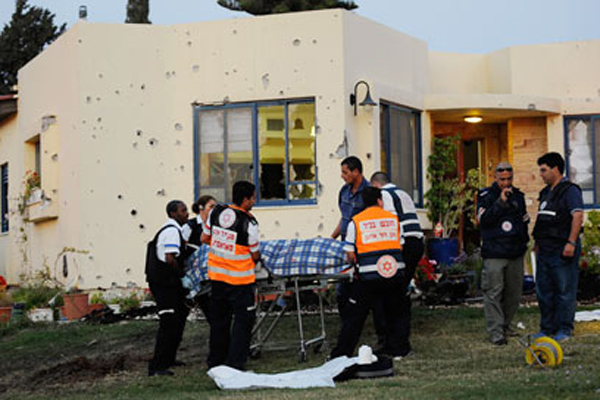
FROM THE GATES OF THE NEGEV
Mortar kills Kfar Aza man in his garden
By Ulla Hadar
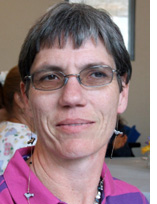 KIBBUTZ RUHAMA, Israel—A mortar attack on Erev Shabbat from Gaza killed Jimmy Kaddoshim, 48, in the neighboring kibbutz of Kfar Aza, one of the Israeli settlements adjacent to Gaza in the Sha’ar Hanegev region. Three other people were injured and several suffered panic attacks. KIBBUTZ RUHAMA, Israel—A mortar attack on Erev Shabbat from Gaza killed Jimmy Kaddoshim, 48, in the neighboring kibbutz of Kfar Aza, one of the Israeli settlements adjacent to Gaza in the Sha’ar Hanegev region. Three other people were injured and several suffered panic attacks.
Kaddoshim, who was in his garden when the mortar fell, was renowned in this community as a photographer and hang gliding enthusiast. He is survived by a wife and three children. His family supplied the two photos taken by Kaddoshim below.
Another mortar landed near the Kibbutz's clubhouse, causing damage to the structure.
Member of the Knesset Shai Hermesh, a former mayor of Sha'ar Hanegev, said the mortar attacks by Hamas terrorists in Gaza are far more dangerous than Kassam rocket attacks because the "Red alert" alarm cannot detect when a mortar is activated and the population does not get any warnings before the attack
Hermesh, a Kfar Aza resident, added that there are no fortification of the houses and that
the people of his kibbutz, right on the border, are living targets.
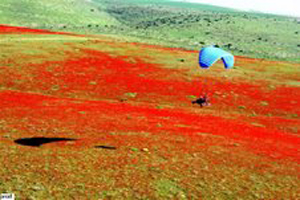 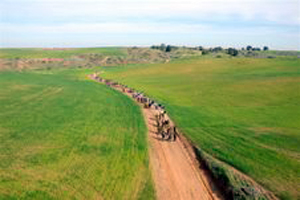
On Friday, there were at least three Kassam attacks and six mortars fired towards the Western Negev area, according to authorities.
Two Kassam rockets fell in open areas of the Sha'ar Hanegev municipality in the afternoon, they said. Later two additional mortars were fired over the area without causing damage or injuries.
The Eshkol municipality in Western Gaza also suffered attacks on Thursday and Friday, also without injuries or damage.
Nancy Harrison
cruise & tour specialist
(619) 265-0808

A Yom Ha'atzma'ut party to remember
By Sigal Shalev Peres
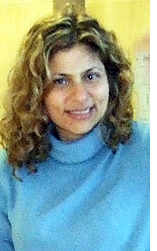 HAZEVA, Israel—This moshav in the Arava region of Israel, along the Jordanian border, really knows how to throw a party. HAZEVA, Israel—This moshav in the Arava region of Israel, along the Jordanian border, really knows how to throw a party.
Months before Yom Ha’Atzma’ut (Israel Independence Day), a committee from the moshav took upon itself the responsibility of creating a celebration that would be both “informative and respectable” and which would involve every youngster and adult in the moshav.
 Committee members decided to divide themselves into six subcommittees—one for each decade of Israel’s existence—and to create exhibits and activities representing each of those decade. Committee members decided to divide themselves into six subcommittees—one for each decade of Israel’s existence—and to create exhibits and activities representing each of those decade.
The first decade, 1948-1958, included an authentic kiosk that sold a popular drink of the time—flavored seltzer water, which is known in Hebrew as “gazoz.” There was also a recreation of a mabara (a transit camp for new immigrants), as well as posters from the period.
Subsequent decades were represented with movies, images of the wars which Israel was forced to fight or endure (50’s Sinai; 60s Six –Day War; 70s-Yom Kippur War; 80-Lebanon; 90s-Gulf War I, 00s-Second Lebanon War); the first lottery, the first McDonald’s franchise; the assassination of Yitzha Rabin, and the development of agriculture in Hazeva—which prides itself on its tasty produce.
Children born in each decade also were represented, sometimes riotously as when grown men dressed in children’s clothing and imitated the old comedy group,"Ha Gashash Ha Chiver" (The Pale Tracker).
Fashions through the decades were the highlight of a show, with particular attention given to the evolving styles of wedding dresses. There were satires on the kinds of questionnaires given to children in day care centers; grandparents and children dancing to children’s songs, and a potluck buffet which could compete with the spreads on any luxury cruise ship.
The highlight came at 10:50 p.m. that evening when partygoers sang "Hatikvah" along with people all over the world in an effort to obtain a Guinness Book of Records notation for the most people ever to sing the same song at the same time.
It was truly an Independence Day to remember.

AMAZING STORIES OF JUDAISM
The Rosh Yehsiva's love for his talmadim
By Rabbi Baruch Lederman
Editor’s Note: This is the fourth in a series of columns in memory of Rabbi Chanoch Henoch Leibowitz, Rosh Yeshiva of the Chofetz Chaim Seminary in New York, who died April 15 at age 92.
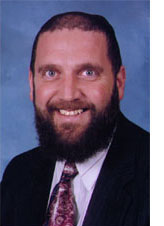 SAN DIEGO—The Rosh Yeshiva zt"l used to quote the Zohar that the essence SAN DIEGO—The Rosh Yeshiva zt"l used to quote the Zohar that the essence
of Torah is ahavah (love) and that in order to be received, Torah had to be given over with ahavah. Rabbi Aryeh Rodin, of Dallas, Texas, related that he was once at the barber shop with the Rosh Yeshiva. The barber asked him if the older man was his father.
He replied that he was not. The Rosh Yeshiva then said, "I am not his father, but he is my son." The Rosh Yeshiva told us how his father loved him and taught him Torah. The Rosh Yeshiva transmitted this love through his Torah teaching to us, his talmidim (students).
Rabbi Benzion Chait related that the Rosh Yeshiva used to get unparalleled nachas (pride and joy) when he saw that his talmidim had talmidim. We his talmidim only hope that we are worthy to transmit the Torah b'ahavah that the Rosh Yeshiva gave us.
The following is from my esteemed chaver (colleague) Rabbi Mordechai Palgon of Miami Beach, Florida.
As the Rosh Yeshiva ztl's secretary it was my job to get the Rosh Yeshiva out of shiur on time. It happened once that the Rosh Yeshiva had a flight to catch and he needed to give an early shiur so that he could be home by 12:30 PM to eat lunch, pack up and be heading for the airport by 2 PM.
The Rosh Yeshiva got to shiur by appx 11:20 AM. At around 12:25 PM I tried ending the shiur only to have the Rosh Yeshiva continue his back and forth with one particularly aggressive talmid. I tried all my usual tricks, but to no avail.
Then came the message at around 12:40 PM that there was a phone call for me in the office. No doubt, I knew it had to have been the Rebbetzin a"h, nudging me to get the Rosh Yeshiva home already as he had a tight schedule.
I then brought with me the Rosh Yeshiva's coat, and returned into the Blatt Shiur coat in hand, waiting to take the Rosh out the closest door and avoid the exit via the front of the building, all the people, etc. The Rosh Yeshiva put his coat on and outside was surrounded by a swarm of talmidim. All this time the Rosh Yeshiva continued arguing vehemently with this one aggressive talmid.
It was already 1:20 PM and I was really concerned and worried for the Rosh Yeshiva 's flight. The argument continued with them mamash fighting in learning over the chiddush the Rosh Yeshiva was saying. The Rosh Yeshiva absolutely was ignoring my prods, at that point there was no mistake.
Finally, at approximately 1:30 PM the Rosh Yeshiva listens to one last response from the talmid and pronounces that he must go, and starts running down the steps on a dime, and gets into the awaiting car. As I lock the car doors and get ready to drive, the Rosh Yeshiva says, "R' Mordechai, did you hear, did you hear?" I said, "no Rebbe, what did I miss?"
The Rosh Yeshiva says "He was still yelling, but not as loud, I think he heard my svara (logic)."
The Rosh Yeshiva wanted this talmid to hear the svara, and the moment he was convinced that he heard it, he started running. The Rosh Yeshiva never lost focus on his ultimate tafkid (purpose), to make lamdanim (scholars) out of us. He was totally committed to it. Nothing could budge the Rosh Yeshiva when a talmid was in the midst of receiving his Torah miSinai.
The following is from my esteemed chaver (colleague) Rabbi Pinchus Avruch of Milwaukee, Wisconsin.
"To share a ma'aseh, my Mara D'asra, Rav Michel Twerski related that his brother Shea (Rabbi Dr. Abraham J. Twerski) once was invited as a guest presenter at the Chofetz Chaim Yeshiva's Alumni Weekend. At the end of one of the Rosh Yeshiva 's talks to the Alumni (that Reb Shea sat in on), the Rosh Yeshiva expressed his love for assembled group of talmidim/alumni. Reb Shea told Rav Michel that, unfortunately, he had never before nor never since (to that time) ever heard a rosh yeshiva tell his talmidim that he loves them."
Dedicated by Dr. Yehuda & Debra Trestman on the occasion of the 4th yahrtzeit of his father Betzalel ben Shlomo Halevi.


Some guidelines for synagogue dress
By Rabbi Leonard Rosenthal
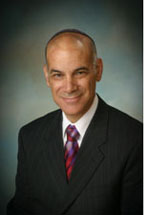 SAN DIEGO—Parshat Emor instructs the Kohanim on the proper way of offering sacrifices. It tells them what is permissible and what is not, and that an officiating Kohein, "...shall not profane these places sacred to Me, for I the Lord have sanctified them." (Lev. 21:23) Curiously enough, these Priestly laws were given not only to the Kohanim but to everyone :"Thus Moses spoke to Aaron and his sons and to all the Israelites." (Lev. 21:24) SAN DIEGO—Parshat Emor instructs the Kohanim on the proper way of offering sacrifices. It tells them what is permissible and what is not, and that an officiating Kohein, "...shall not profane these places sacred to Me, for I the Lord have sanctified them." (Lev. 21:23) Curiously enough, these Priestly laws were given not only to the Kohanim but to everyone :"Thus Moses spoke to Aaron and his sons and to all the Israelites." (Lev. 21:24)
Extrapolating from this verse, Rabbi Yehuda Nisenbaum wrote that the instruction against profaning holy places applies not only to the Kohanim in the Temple, but to every Jew today. He explained that every Jewish home is a holy place and that every synagogues is a "holy of holies." Every synagogue should be a place where Jews can come to experience God’s Presence and have their spirits lifted. Anything in a synagogue which adds to its sanctity is praiseworthy. Anything that detracts from it should be avoided.
That a synagogue should be beautiful and appropriately decorated goes without saying. But do Rabbi Nisenbaum’s words also apply to those who enter therein?
When I was growing up it was unheard of for a man to come to services without a jacket and tie or a woman in anything but a dress. Our general dress code is considerably more relaxed today. In fact, when I wear a suit to the office I am inevitably asked at whose funeral I am officiating!
We may still well ask if there should be limits on what is considered appropriate shul attire? Are jeans and t-shirts appropriate for Shabbat services? How about short skirts or off the shoulder blouses? Should men, women, or children wear shorts or sneakers?
While I have heard many diverse and valid opinions on these and other sartorial questions, my own thoughts tend to be on the liberal side. I am more concerned that people come to the synagogue than I am with what they wear.
Yet I, too, do not believe that "anything goes" when it comes to synagogue attire. While I generally do not have a problem with casual attire I do believe that those who are celebrating special occasions in the synagogue should be dressed more formally. I also believe that tzniut (modesty) should be a consideration. This means no torn t-shirts or those with inappropriate words or graphics. Bare shoulders, low cut blouses, and bare midriffs are also not acceptable.
While most of my comments seem directed at women, there is one important dress consideration for men as well. Jewish tradition prescribes the covering of one’s head as a sign of deference and respect before God. Although our male members are careful to wear kippot in the sanctuary they are not as meticulous in the rest of the building. It is, however, a sign of respect for males (and females if they wish!) to keep their heads covered with a kippah or hat whenever they are in the building and especially at meals.
Our synagogue is a holy space and the way we dress and behave in it should reflect its sanctity.


THE JEWISH CITIZEN
Jewish-named places in San Diego's news
By Donald H. Harrison
 SAN DIEGO—Probably coincidentally, although possibly not, two explosive devices set off over the last week were at venues named for Jews who had been active in San Diego civic affairs during their lifetimes: the Edward J. Schwartz Federal Court House downtown and the Wangenheim Middle School in the Mira Mesa area SAN DIEGO—Probably coincidentally, although possibly not, two explosive devices set off over the last week were at venues named for Jews who had been active in San Diego civic affairs during their lifetimes: the Edward J. Schwartz Federal Court House downtown and the Wangenheim Middle School in the Mira Mesa area
Around 1 a.m. Sunday morning, May 4, an explosion of a pipe bomb shattered the early morning quiet of downtown San Diego, blowing out some windows and causing minor damage to the Edward J. Schwartz Federal Courthouse. Law enforcement officials who combed the area afterwards said the homemade device sent potentially deadly nails flying as far as two blocks from the building, where not only federal courts hold session but where a variety of federal agencies have their offices. Luckily, no one was injured in the blast for which no party has yet claimed responsibility.
On Wednesday morning, May 7,a device exploded in a trash can at Wangenheim Middle School in the Mira Mesa area, without causing injury.
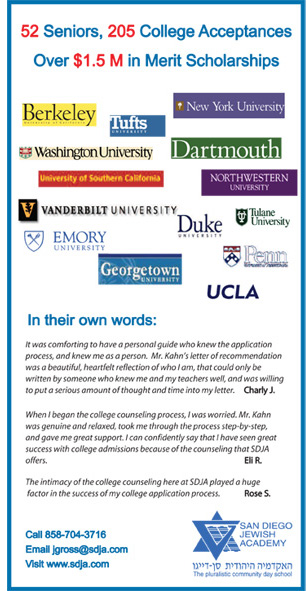 “The device is called an overpressure device,” school district spokesman Jack Brandais told news media. “It made a big bang like a car backfiring,” without causing any injuries. The explosion prompted the arrest that afternoon of a 12-year-old boy, who was not identified because he is a juvenile. “The device is called an overpressure device,” school district spokesman Jack Brandais told news media. “It made a big bang like a car backfiring,” without causing any injuries. The explosion prompted the arrest that afternoon of a 12-year-old boy, who was not identified because he is a juvenile.
The courthouse was named for Schwartz in 1994, while, at age 82, he was still a senior judge of the federal court. Up to that point, he had served 26 years on the federal bench, and in the previous nine years had been a municipal and superior court judge. When then Congresswoman Lynn Schenk (D-San Diego) told Schwartz that she had persuaded Congress to name after him the building which he had helped plan, he reportedly responded, “But I’m not dead yet!” In fact, he would live to the year 2000.
At the ceremony dedicating the building in Schwartz's honor, Judge Howard Turrentine commented: “The wonderful part of this dedication today is the fact that Judge Schwartz is with us and taking part in these proceedings. Too many times in the past, this honor has been accepted by a widow of a great trial judge or members of his family when the building is dedicated…
“For his entire judicial career…Judge Schwartz has been a standard of excellence for trial judges. He presided over a courtroom with intelligence, with integrity, with fairness and grace. He always has made just and prompt decisions. In Navy language, he ran a tight but happy courtroom.”
Julius K. Wangenheim, who was a brother-in-law and a partner of Melville J. Klauber in the Klauber-Wangenheim wholesale grocery business that was active in late 19th and early 20th century San Diego, was among those civic leaders who called for the improvement of City Park, which would become known as Balboa Park.
He also was a member of the Board of Library Commissioners, and it is for him that the Wangenheim Rare Book Room at the Central Library also is named.
A third venue—Rose Canyon—was the backdrop last week of the endorsement for mayor of Steve Francis by the leadership of the Sierra Club. Francis, who is trying to unseat incumbent Mayor Jerry Sanders, was praised by club representatives for his stand in opposition to a proposed bridge that would cross the canyon along Regents Road. Officials of the Friends of Rose Canyon, who contend the bridge would spoil the ecology of the canyon, also participated in the news conference.
Although most people assume that Rose Canyon was named for the flower, in fact it was named after Louis Rose, an immigrant from Neuhaus-en-der-Oste, Hanover (Germany), who settled in San Diego in 1850 following a 10-year sojourn in New Orleans and San Antonio and a cross-country trip in covered wagon.
Rose established numerous businesses in San Diego and also served on the San Diego City Board of Trustees and the San Diego County Board of Supervisors. He purchased the land known as La Cañada de las Lleguas (Canyon of the Mares) in the 1850s, and there built the area’s first tannery. Eventually his spread became known as Rose’s Ranch, and later as Rose Canyon. To seismologists, the canyon running along both sides of Interstate 5 roughly between the Balboa Avenue and Gilman Drive exits is also a well-known fault zone.

ADVENTURES IN SAN DIEGO JEWISH HISTORY
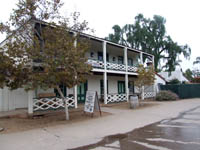
Robinson-Rose House
|
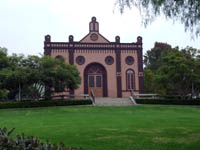
Old Temple Beth Israel |
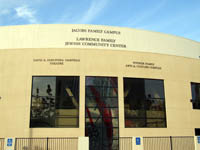
Lawrence Family JCC |
Editor's Note: We are reprinting news articles that the Southwestern Jewish Press ran in 1950. If you have historical topics about the San Diego Jewish community you would like us to explore, please e-mail your suggestions to editor Don Harrison at sdheritage@cox.net
San Diego To Exhibit Israeli Art
From Southwestern Jewish Press, June 9, 1950, page 1
A collection of original works of art by contemporary artists from Israel will be shown in San Diego from June 21 through June 27, according to Albert A. Hutler, director of the United Jewish Fund.
Arranged by the Jewish Center Lecture Bureau of the National Jewish Welfare Board for showing by communities throughout the country, the exhibit consists of some fifty excellent works of art. It is hoped that the exhibit will be shown at the three Synagogues, and the Cottage of Israel while it is here.
Acquired through the generosity of Dr. Leon Kolb, San Francisco art patron and collector, the works included in the exhibit were made available to JWB on a loan basis form Dr. Kolb’s own collection. Among the water colors, lithographs, wood cuts and etchings in black and white are the works by the following artists:
Jacob Steinhardt, Joseph Budko, Isi Ascheim, Ludwig Schwerin, Francisca Baruch, Jacobs Pins, Marcel Jancu, Johanan Simon, Anna Ticho and Myron Sima.
Human Side of the United Jewish Appeal
From Southwestern Jewish Press, June 9, 1950, page 2
A year ago a new American came to San Diego. His name was William Cohn. Alone and without friends, he attempted to get work and make a place for himself in San Diego. He found a job, he worked and he saved his money. He then decided there was not too much of a future for him in our community and so he went to join relatives in Chicago. While there he found a job and repaid the Émigré Committee for every cent they had spent on him while in San Diego.
On May 27 a letter was received by the United Jewish Fund from Willie Cohn. He wrote “Despite the fact that I have given already a contribution to the United Jewish Appeal of Chicago, I will not omit to support the San Diego Fund Raising Campaign, and I am enclosing herewith my contribution of $15.
Willie Cohn is no longer a New American. Willie Cohn is an American and a Jew. How many of the 400 who have not yet pledge in San Diego or how many of those who cut their contribution in1950 without reason, can say the same?
Synagogue Kashrut Commission of San Diego
From Southwestern Jewish Press, June 9, 1950, page 6
In order to promote the interest of Kashrut observances the Synagogue Kashrut Commission has been formed in San Diego. This Commission is comprised of five representatives of Beth Jacob and five representatives of Tifereth Israel Congregation as well as their respective rabbis.
At a recent meeting the Synagogue Kashrut Commission decided to issue Certificates of Endorsement to those individuals and establishments dealing with Kashrut.
At present such certificates will be issued to Kosher Meat Dealers and Shochtim (ritual slaughterers) who fulfill the necessary qualifications according to the following statement issued by the Commission:
Qualifications for Certificates of Endorsement of the Synagogue Kashrut Commission of S.D.:
Recognizing that Kashrut involves not only business aspects, but is a vital force in the preservation of Judaism, this Synagogue Kashrut Commission of San Diego is constituted for the purpose of enhancing, promoting and safe-guarding Kahrut in San Diego; and will give endorsements to such business establishments and individuals dealing with Kashrut who comply with its rules and regulations.
The Commission also adopted a regulation that no Schochtim shall be engaged in the merchandising of Kosher Meat or Fowl, either as a proprietor or as an employee.
At the present time, and until June 30th, the Commission will accept applications for its Certificates of Endorsement.
All applications should be sent to Mr. Morris Penn, Secretary of the Kashrut Commssion, 2930 Howard Avenue, San Diego 4, California. The members of the Synagogue Kashrut Commission are Paul Nestor, M.S. Berlin, Alex J. Newman, Moe J. Hershey, I Jacobson, Joseph Gelman, Sandor Goldberger, S. Hirsch, Abe Abramson, Morris Penn, Rabbis Baruch Stern and Monroe Levens.

SAN DIEGO JEWISH WORLD THE WEEK IN REVIEW
Shoshana Bryen in Washington DC: Israel at 60 continues to bend over backwards to accommodate neighbors
Cynthia Citron in Hollywood: Credit Sweetest Swing in Baseball with RBI
Ulla Hadar in Kibbutz Ruhama, Israel: Austria's president tells Israeli delegation of his sympathy for Sha'ar Hanegev residents
Donald H. Harrison in San Diego: Hebrew Day takes virtual tour of Israel
Sheila Orysiek in San Diego: Chapter Seven in the serialization of her novel, Reluctant Martyr
Adventures in San Diego Jewish History: What was the Jewish community news in 1950? Who were the newsmakers? Our archives answer these questions in daily installments
Shoshana Bryen in Washington, D.C.: King Abdullah points out Rice's folly
Donald H. Harrison in San Diego: SDJA students, faculty join worldwide quest to be largest group singing at the same time
Rabbi Dow Marmur in Toronto, Canada: Oh, Canada: Do you honestly think that Jerusalem is not a real part of Israel?
Sheila Orysiek in San Diego: The day that Israel became a nation
Cheryl Rattner-Price in La Jolla, California: JCC features work of 8 women artists
Hal Wingard in San Diego: His song, "Noah"
San Diego Jewish World staff in San Diego: Jay Winheld, CPA and Jewish volunteer, dies at 71.
Adventures in San Diego Jewish History: What was the Jewish community news in 1950? Who were the newsmakers? Our archives answer these questions in daily installments
Judy Lash Balint in Jerusalem: The anticipation of Yom Hazikaron
Donald H. Harrison in San Diego: San Diegans and Israelis join in their grief for the casualties of war and of terror
Evelyn Kooperman in San Diego: San Diego Jewish Trivia: Authors
Cantor Kathy Robbins in Cardiff-by-the-Sea, California: Im Tirtzu: Hold Fast to Dreams
Adventures in San Diego Jewish History: What was the Jewish community news in 1950? Who were the newsmakers? Our archives answer these questions in daily installments
Donald H. Harrison in San Diego: Marketing Middle East peace through the products offered in Western supermarkets
Dov Burt Levy in Salem, Massachusetts: Comfort for the bereaved on Yom Hazikaron and year round: the gift of active memory
J. Zel Lurie in Delray Beach, Florida: Let us look at Israel‘s Declaration of Independence as its 60th birthday nears
Joel Moskowitz in La Jolla, California: A dybbuk that teaches righteousness
Adventures in San Diego Jewish History: What was the Jewish community news in 1950? Who were the newsmakers? Our archives answer these questions in daily installments
Cynthia Citron in Los Angeles: From Door to Door is a Dor v' Dor story
Donald H. Harrison in San Diego: There are no cushions in the Duvdevan
Sheila Orysiek in San Diego: What kind of dance accompanied Song of the Sea? We have some interesting clues
Ira Sharkansky in Jerusalem: Independence Week brings its tensions
Dorothea Shefer-Vanson in Jerusalem: Orphaned art looking for owners
Adventures in San Diego Jewish History: What was the Jewish community news in 1950? Archives of the Southwestern Jewish Press provide some of it.
< BACK TO TOP
|
|
